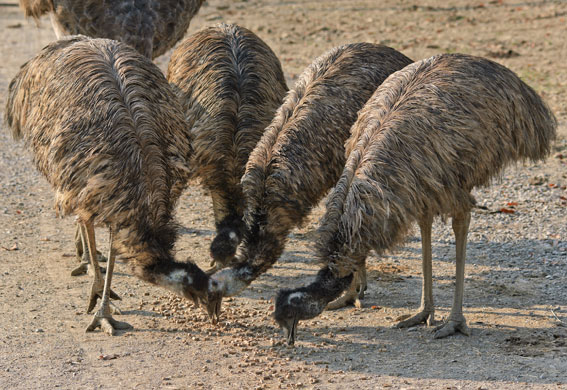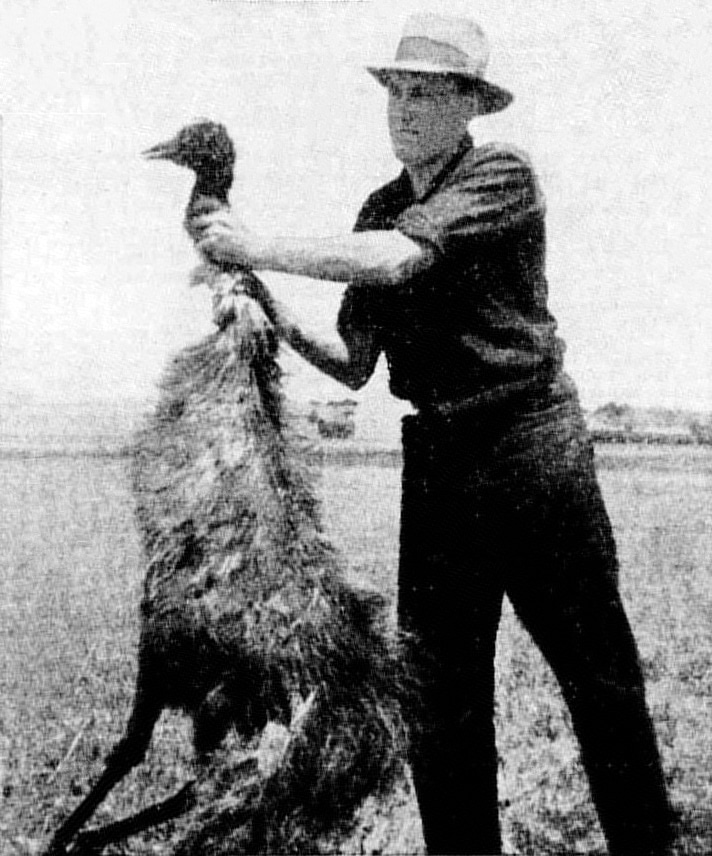Last updated on January 31st, 2023 at 04:13 am
In 1932, Australia found itself in a “war” with a formidable opponent- the Emu. These flightless birds could easily outmaneuver the Australian army and caused considerable damage to crops and property. The ordeal sounds ridiculous, but these events are entirely accurate.
The emus won a decisive victory over the Australian forces, proving that they are no pushovers. However, what led to this unlikely victory for the flightless bird, and how could an entire army suffer an embarrassing defeat? Keep reading to learn more about the Great Emu War.

Setting the Stage
The Great Emu War started after the end of World War I. Australian soldiers were returning home from the battlefields of Europe. Before being drafted, these had typical jobs as farmers, shepherds, and laborers. They were now returning to the same line of work, but unfortunately, there were few jobs.
Things only got worse for the Australian economy when the Great Depression began. The country needed an economic stimulus, and many thought that could come through agriculture. So, the government offered some reprieve for the hardships by creating a “soldier settlement scheme” across Australia.
During this effort, over 5,000 ex-troops were supplied a plot of land, mainly in the areas of Perth. With this land allocation, ex-soldiers needed to raise sheep and cultivate wheat. The Australian government bought approximately 90,000 hectares of land but realized that they needed even more to realize their vision.
The government also supplied them with initial funds and equipment, but it was insufficient. The farmers quickly realized that they could not simply rely on traditional farming methods to be successful. Moreover, the lands the government provided them with were unsuitable for establishing prosperous farms, even for those who had plenty of experience.
However, that didn’t slow the government’s efforts. Unfortunately, this plan was doomed from the start. The plummeting prices of wheat and lack of promised wheat subsidies destroyed any chance of success.
Wildlife Control Operations
The Australian government is notorious for its “culling” or “control” operations of various species to protect the agricultural industry and prevent any significant financial losses caused by pests. Historically, they’ve released potentially damaging and invasive species into the wild; unfortunately, the Australian government has no idea the damage they’ve caused until it’s too late.
For example, take the Cane Toad, a species of massive, toxic toads meant to control beetle populations. While they may have performed their initial job, the Cane Toad is now invading the Queensland area, and its population is estimated to be in the billions.
The Great Emu War
The Great Emu War was a culmination of the government’s soldier settlement scheme and a mass migration of Emus into the open fields of Perth where these struggling farms now resided.
Emus Are Resilient Animals
Part of why these Emus were such a problem was because they are incredibly resilient animals. They can travel long distances and are also challenging to shoot.
When they sense danger, they run away in zigzag patterns in a panic, and due to this and their tough feathers, they are resilient to bullets. In fact, according to the reports from this event, it takes approximately ten bullets to kill a single Emu.
The Farms Are Overwhelmed
The farms could not deal with the flightless birds, and until 1922, these birds were classified as a “protected species.” Shortly after realizing the seriousness of the issue, the government changed the status to “vermin.”
The Great Emu War started in 1932 emus destroyed crops and terrorized citizens in the Campion district, located west of Perth.

The farmers had enough and decided to take matters into their own hands but quickly realized that they were no match for the highly agile birds. The Emu population had grown so large it had become a significant problem and the government decided that something needed to be done about the birds.
The First Day of Battle
Due to immense pressure from farmer’s unions and the public, officials brought in the Australian army to help with the situation.
On November 11th, 1932, Major G.P.W Meredith and his men from the Seventh Heavy Battery Royal Australian Artillery entered the battlefield.
They had two Lewis guns mounted on a truck, but the Emus quickly were impossible to hit because the bumpy terrain made aiming difficult, and Emu groups scattered continuously.
Nevertheless, they were able to shoot down around 50 Emus. The soldiers thought they had won, but they quickly realized they hadn’t made a dent in the population.
The Second Day of Battle
The next day, the soldiers tried a different tactic and spread out over a wider area finding a large group of 1,000 Emus. It was raining, and the Lewis guns jammed, ruining the considerable opportunity, and allowing the birds to escape. This time, they could only kill 10-12 Emus.
After many fruitless efforts, they realized that this method was not sustainable because it used too much ammunition. Ultimately, they used over a quarter of the provided ammunition and barely put a dent in the Emu population.
The Army Gives Up
The emus were too fast and agile for the soldiers. In addition, the birds were smart enough to change their movement patterns, making it difficult for the soldiers to predict their maneuvers.
After a few weeks, the army had to admit defeat and was forced to leave the Emus alone. To keep their farmers happy, the government provided them with the soldier’s remaining ammunition. The government also enacted bounties to encourage more efforts to control the nomadic birds.
The Legacy of the Great Emu War
Although the army was unsuccessful in ridding Australia of the pesky birds, the event has gone down in history. The Great Emu War is now used as a cautionary tale and reminds us that sometimes the best-laid plans don’t always work out. It also reminds us that nature always finds a way to survive.
The Emus are still considered pests in Australia, but they are now protected. The hunting of Emus is only allowed with a permit and only after they are causing significant damage to crops. Although the Great Emu War was a failure, it is still an exciting part of Australian history.

